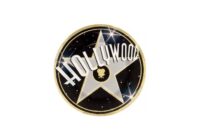April 1, 2012
By Tracey L. Chavous, CHHC
Health and Wellness writer
Healthy Living

These days we are reminded of how far we have come in terms of technology, research, politics and even the ability to eat anything we want no matter the season. We are wrought with countless options for most things in our lives; yet the health of most Americans has diminished to the point where we are expected to outlive many children growing up this very moment. One of the ways to aid in addressing this deeply rooted medical concern is to consider going organic. Going organic is not necessarily limitedto food per se, but the development of a mindset that can plant the seeds of sustainability that will blossom for generations to come. In other words, vote with your fork and your dollar. A longtime friend recently asked me how to begin the process of going organic in the kitchen. The conversation led to a framework around the word itself – ORGANIC.
O – Organize your stock and pantry
Read the labels of what already exists in your cupboards, your refrigerator, and pantry. If your goods have expired, empty out the contents, wash up cans and other contained items and prepare them for the trash and recycling. If you have had the goods for more than a year, you will more than likely not use it. Donate it or get rid of it. Inspect food labels that contain more than 5 or 6 ingredients. If any or most of the words contain multi-syllables that are difficult to pronounce, chances are that its contents do not belong in your body or your child’s body. If the other values on the nutrition label are high in sodium (above 350) or sugar (above 8-10 grams), consider donating or discarding. Those high content ingredients are creating road blocks to better health and contributing to the much acclaimed “muffin top” that is robbing your figure of a better reputation. If you find that your cupboards, refrigerator and pantry are now bare, have no fear. You just took a huge step in the right direction. Now is a good time to write down the kinds of things you threw away, so that when you come across healthier, organic versions, you can purchase them when they are on sale.
R – Rethink

Making changes of any sort requires your mind to align with your intentions, which are urging you to rethink how you think. Ask yourself, how do you eat: alone, on the run, skip meals, planned, local or seasonal and why are you eating: routine, hunger, emotionally, to live or nourish. Use these questions as a springboard to writing down your intentions for changing to lose weight, detox, find balance or reduce cravings. Recording this will support the stages of the goals you set. There is no right or wrong way to go about this; starting is step one of your process. Having reverence for how you see food and where it comes from will allow you to have an impact on future generations by setting the stage for choosing to eat organic products. As your progress grows and you experience fruitful changes, set newer goals that support where you are in your process.
G – Go Green
This is where you vote with your fork and dollars. In the DC metro area, bag tax laws have inspired people to consider their carbon footprint. Customers are asked to use recycled grocery bags and rely less on fossil fuels that expensively create the plastic bags we typically use. This has encouraged people to stop and think about the amount of groceries they buy as well. Choosing organic products to eat helps you reduce the amount of poisonous toxins you not only ingest, but also toxins used to actually make or grow the ingredients in the product. Being part of a movement of preserving the earth’s resources for farming, growing, building and recycling is a responsibility that belongs to everyone.
A – Access
The best organic food is what is grown closest to you; therefore, knowing where to shop to find quality products is crucial in making the switch to organic products. Many stores have become aware of the growing demands of customers wanting better quality food choices in many neighborhoods across the country. It is a reality that some areas shoppers may have a harder time finding what they want. Most major grocery stores have a health food section or aisle. Get to know the people who work in the other areas of the stores (meat and dairy), so they can provide the brands of organic options. You can also make written requests at customer service counters if you feel that the store does not cater to your needs with its’ selections. Many neighborhoods have seasonal farmers markets that are an oasis of locally grown, seasonal produce and products. Joining a CSA (Community Supported Agriculture) would allow you to support local farmers by purchasing shares (subscription farming) of their crops and will support your goal of healthier, cleaner eating by joining. Not sure where to find a CSA?
Check http://www.localharvest.org/ for one nearest to you by entering your zip code in the browser box.
http://www.greenpeople.org/NaturalFood.html is a site that lists all health food markets in the country along with other tips.
N-Natural
After taking some time to experiment with healthier versions of foods that rob the body of vitamins and nutrients, aim for eating foods in their natural state. This will help propel you into the next level. So, instead of eating a bag of all natural potato chips, switch to slicing and baking an organic potato brushed with extra virgin olive oil and a shake of organic sea salt for a treat. Begin to think about how the foods you eat can be less and less processed. Overtime, experiment with trying to become a vegetarian or going vegan where by forgoing eating meat, poultry, fish and dairy products. Learn flexibility and what type of eating agrees with your unique body type and body needs. This takes time. Again begin with small steps at a time and embrace risk taking.
I-Investment

It’s a fact that most people believe going organic is a risk that is felt in the wallet, but it doesn’t have to be. Again, rethink your goals. Start small by educating yourself about foods (fruits and vegetables) that should or don’t have to be eaten organic. For instance, peel able fruits, such as bananas, pineapples and avocados don’t have to be organic. They have far lower levels of pesticides compared to other fruits with higher levels of toxic pesticides that should always be organic such as apples, peaches and strawberries. The Environmental Working Group, a non-profit research and advocacy organization has published a “Dirty Dozen” list of produce. http://www.ewg.org/foodnews/ Invest money into organic versions of produce, grains, meat and dairy that absorb a lot of pesticides used during conventional farming methods. These foods will have higher levels of vitamins, minerals and antioxidants due to better quality soil.
C-Cook
As you move toward your goals and meet new intentions, consider eating less processed, prepared foods and more home cooked meals. If you can read, you can follow a recipe. This will most surely reduce out of pocket expenses to dining out and carryout fare. Leftovers provide an additional bonus of spending less and gaining additional nutritional benefits. Include snacks from home to save additional funds. Enlist friends, family, or coworkers in cooking potlucks and exchanges. Set a theme and state some ground rules about quality of ingredients that respect your goals. Allow guests to bring containers in order to take a sampling of the various dishes. Research options to redo a favorite dish in a healthier way. For example, switch regular pasta for whole grain or gluten free macaroni. Add organic cheese and you have a revised edition of an American favorite.
Choose to eat in a way that makes sense to your overall well-being. Taking small, dedicated steps will open the door to a healthier, more conscientious consumer than you ever dreamed. Go for it!




1 Comment
Pingback: Progress in food | Momentum